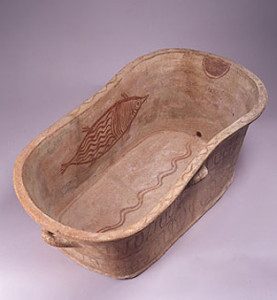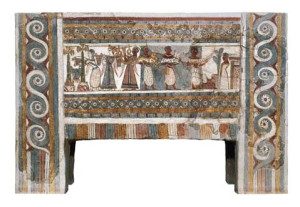
The bathtub, a staple fixture in modern bathrooms, has a rich and intriguing history that predates conventional beliefs. While commonly attributed to the Japanese, recent archaeological findings have shed light on its origins, revealing a much older lineage. This article explores the fascinating history of the bathtub, tracing its roots back to ancient civilizations and unveiling its diverse uses beyond mere hygiene.
Ancient Origins of the Bathtub:
Contrary to popular belief, the history of the bathtub extends far beyond the shores of Japan. Archaeological excavations at sites like Pylos in Messenia have unearthed evidence of ancient tubs dating back to the Aegean Bronze Age. These tubs, often located near ceremonial spaces like the king’s megaron, served various purposes beyond bathing, including purification rituals and symbolic acts of cleansing.
Ritualistic and Ceremonial Uses:
The presence of tubs in proximity to ceremonial spaces suggests their role in religious rituals and purification ceremonies. In the traditional story of the murder of Agamemnon, a bathtub plays a pivotal role in purification rites following the return from war. This highlights the cultural significance attributed to tubs in ancient societies, where they were perceived as sacred vessels for cleansing and spiritual renewal.

Beyond Hygiene: Tub as Burial Vessel
While modern tubs are primarily associated with cleanliness and relaxation, ancient tubs served a dual purpose, including burial rites. In the Aegean Bronze Age, tubs were utilized as burial vessels, reflecting the diverse functions attributed to these artifacts. The incorporation of tubs into burial practices underscores the complex belief systems and cultural practices of ancient civilizations, where everyday objects took on profound symbolic meanings.
Archaeological Insights:
The excavation of ancient tubs provides invaluable insights into the material culture and daily life of past societies. Through careful analysis of archaeological data, researchers can reconstruct the usage patterns, manufacturing techniques, and symbolic significance of tubs in different cultural contexts. These findings contribute to our understanding of ancient hygiene practices, religious beliefs, and social customs, enriching our knowledge of human history.
Modern Comparisons and Reflections:
As we marvel at the sophistication of ancient tubs uncovered by archaeologists, it’s essential to compare them with their modern counterparts.

While modern tubs boast advanced amenities and technological features, ancient tubs served as multifunctional artifacts embedded with cultural, religious, and symbolic meanings. Reflecting on the evolution of the bathtub reminds us of the enduring human fascination with cleanliness, ritualistic practices, and the transformation of everyday objects over time.
Conclusion:
The journey through the history of the bathtub unveils a tapestry of cultural traditions, religious practices, and technological advancements spanning millennia. From ancient rituals of purification to contemporary symbols of luxury and comfort, the bathtub has undergone a remarkable evolution, reflecting the changing needs and aspirations of humanity. As we delve into the archaeological record and unravel the mysteries of ancient tubs, we gain a deeper appreciation for the intricate interplay between culture, technology, and human ingenuity.





